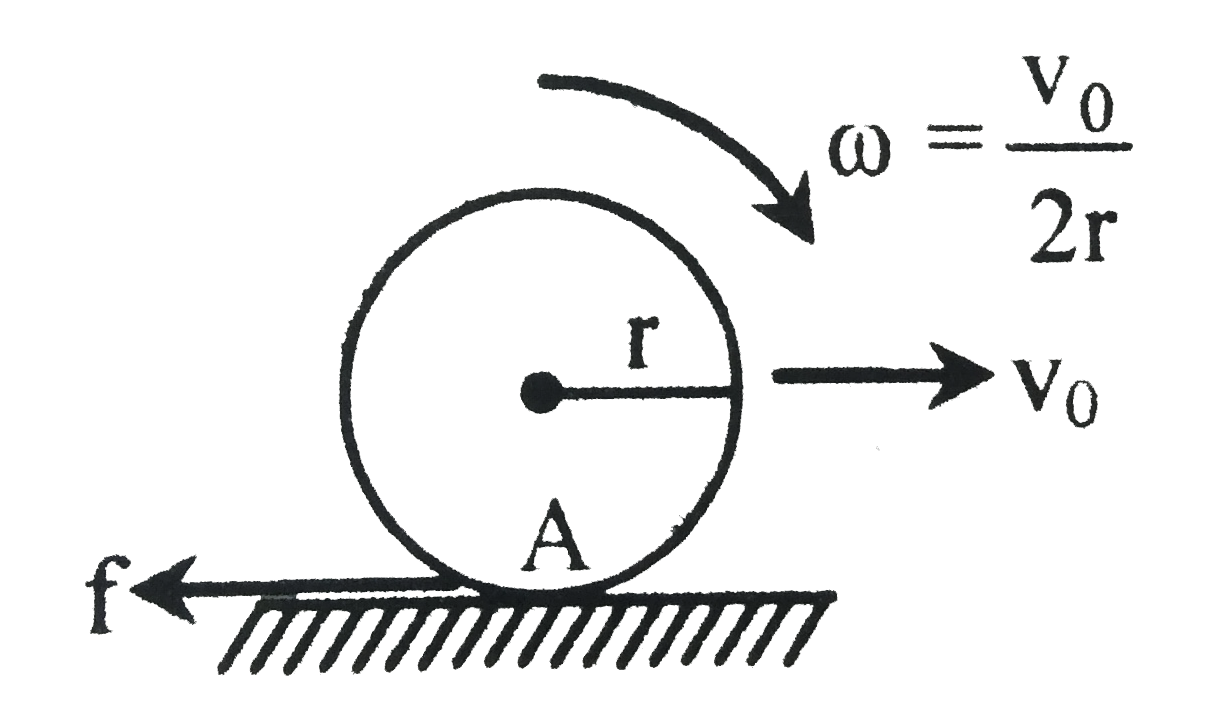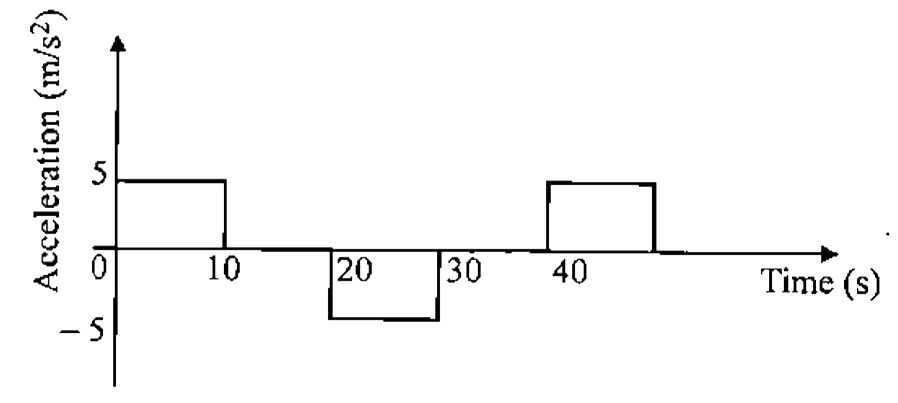Figure shows a sphere moving in a steady flow of air in the x-direction on a horizontal plane.The air stream exerts an essentially constant acceleration 1.8m/sec2 on the sphere in the x-direction.If at t=0 the sphere is moving as shown in figure, determine the time t required for the sphere to cross the y-axis again. 
1/3sec
2/3sec
4/3sec
5/3sec
The correct Answer is:D
The motion of the sphere is similar to projection motion.The components of its acceleration are ax=1.80m/s2,ay=0.When the sphere crosses the y-axis, its displacement component along x-axis is zero.0=(vixt)+12axt2,
0=3sin30∘t−12(1.8)t2ort=1.667s
Topper's Solved these Questions
- MOTION IN A PLANEBOOK - NARAYNACHAPTER - MOTION IN A PLANEEXERCISE - Level -V Multi answer
18 Videos
- MOTION IN A PLANEBOOK - NARAYNACHAPTER - MOTION IN A PLANEEXERCISE - Level -V Passage
15 Videos
- MOTION IN A PLANEBOOK - NARAYNACHAPTER - MOTION IN A PLANEEXERCISE - NCERT BASED QUES. PASSAGE
8 Videos
- MECHANICAL PROPERTIES OF SOLIDSBOOK - NARAYNACHAPTER - MECHANICAL PROPERTIES OF SOLIDSEXERCISE - LEVEL-II (H.W)
24 Videos
- MOTION IN A STRAIGHT LINEBOOK - NARAYNACHAPTER - MOTION IN A STRAIGHT LINEEXERCISE - Level 2 H.W
29 Videos
Similar Questions
A sphere of mass M and radius r shown in figure slips on a rough horizontal plane. At some instant it has translational velocity V0 and rotational velocity about the centre v02r. Find the translational velocity after the sphere starts pure rolling.
 .
.
View SolutionA plank of mass m1 with a uniform sphere of mass m2 placed on it rests on a smooth horizontal plane. A constant horizontal force F is applied to the plank. With what acceleration will the plank and the centre of the sphere move provided there is no sliding between the plank and the sphere?
View Solution
Knowledge Check
The figure shows a smooth inclined plane of inclination θ fixed in a car. A sphere is set in pure rolling on the incline. For what value of the acceleration of the car in the horizontal direction the sphere will continue pure rolling?
 AgcosθBgsinθCgcotθDgtanθ
AgcosθBgsinθCgcotθDgtanθA particle of mass m is initially situated at point P inside a hemispherical surface of radius r as shown in the figure. A horizontal acceleration of magnitude ao is suddenly produced acceleration on the particle in the horizontal direction. If gravitational acceleration is neglected, then time taken by the particle to touch the sphere again is
 A√4rsinαaoB√4rtanαaoC√4rcosαaoDNone of these
A√4rsinαaoB√4rtanαaoC√4rcosαaoDNone of theseFigures shows a smooth inclined plane of inclination θ fixed ina car. A sphere is set in pure rolling on the incline. For what value of a (the acceleration of car in horizontal direction) the sphere will continue pure rolling ?
 AgcosθBgsinθCgcotθDgtanθ
AgcosθBgsinθCgcotθDgtanθ
A sphere of mass M and radius R is held on the inner wall of a hollow sphere of mass 4M and radius 6R .The bigger sphere is kept on a smooth horizontal table and the centres of the two spheres lie on horizontal line.The system of two spheres is released from this position. The smaller sphere slides on the inner smooth wall to reach the other extreme position (shown in dotted line).The displacement of the centre of the larger sphere as the smaller sphere moves from one extreme to another is xcm. Value of x is: ( Take R=4.5cm) qquad y qquad yR Delta M
View SolutionThe acceleration vs time of a particle moving along +x direction is shown in figure-1.23. If starts at t=0, from rest, Draw the position -time graph for the motion.

View SolutionAt t=0, the particle is at the origin and its velocity is 10m/s at an angle 37∘ with the x-axis. The particle moves in x−y plane with a constant acceleration of 1m/s2 along the y-axis. Find the magnitude and direction of the velocity after 2s.
View SolutionAn object is moving in x−y plane its velocity and acceleration at t=0 are represented in figure.

After how much time object crosses the y−axis:-
View SolutionPosition-time graph for a particle moving along x− direction is as shown in the figure. Average speed of the particle from t=0 to t=4 is :

View Solution
